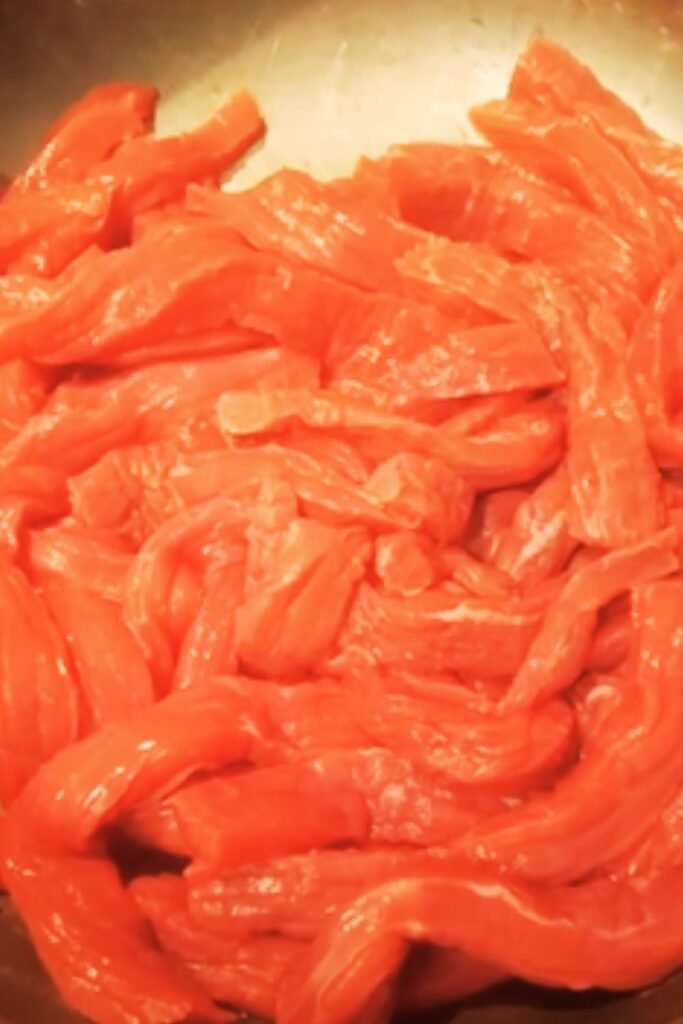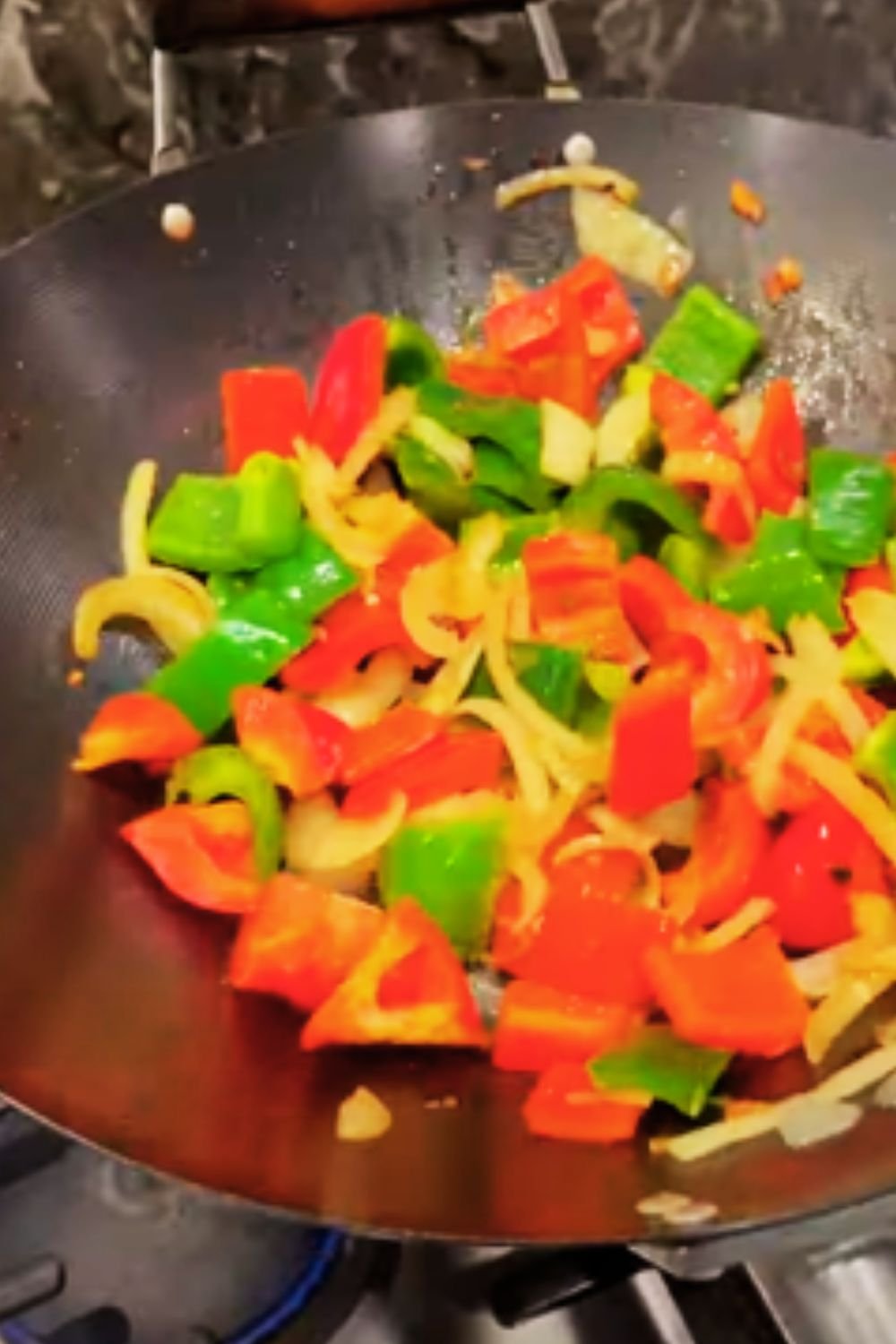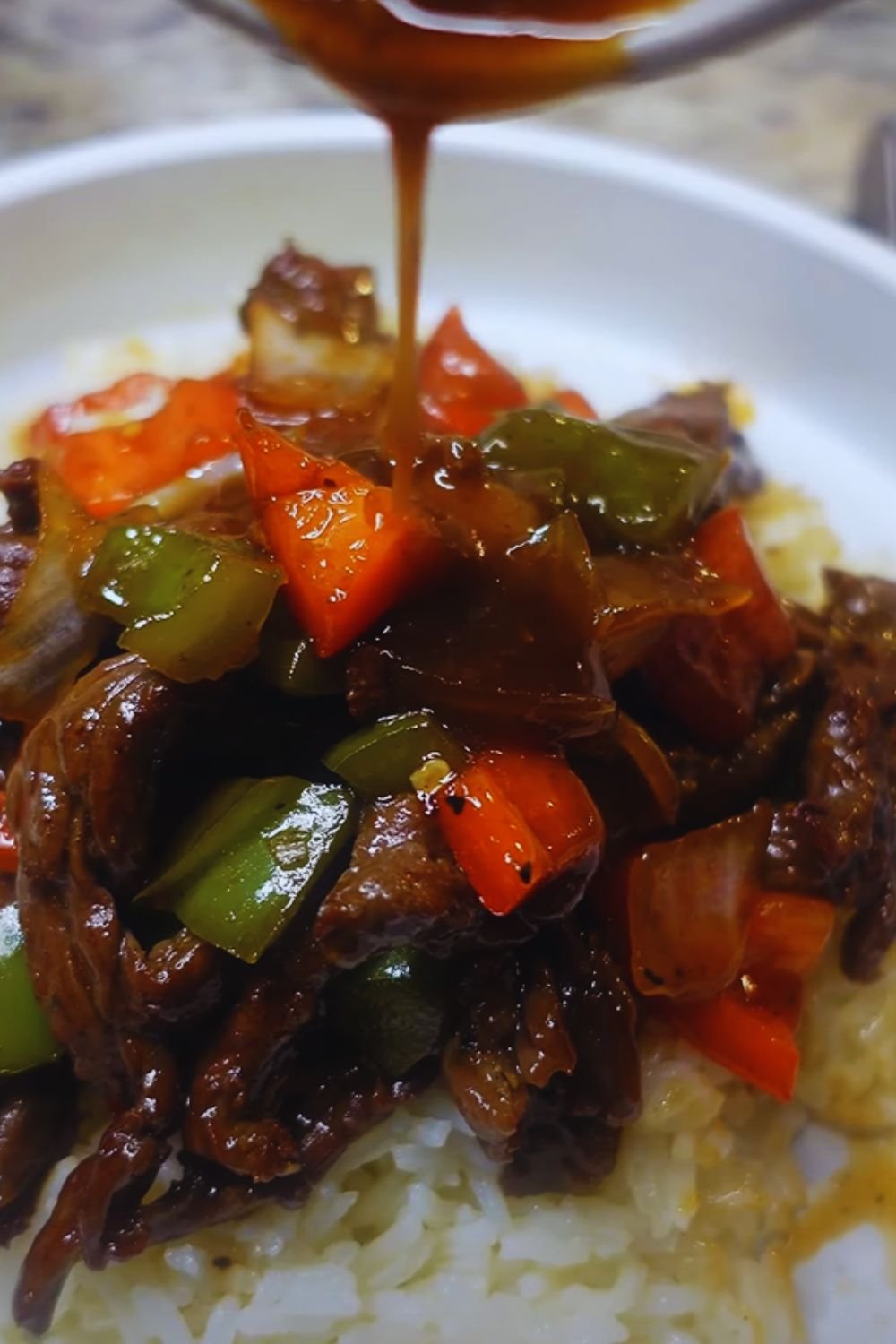There’s something magical about the moment when the aroma of Jamaican Pepper Steak fills my kitchen. As someone who’s spent years exploring Caribbean cuisine, I’ve come to appreciate how this dish represents the beautiful fusion of flavors that makes Jamaican food so distinctive. Today, I’m excited to share my tried-and-true recipe for authentic Jamaican Pepper Steak that brings the vibrant tastes of the island right to your dinner table.
The Roots of Jamaican Pepper Steak
Before diving into the recipe, let’s take a moment to appreciate where this dish comes from. Jamaican Pepper Steak reflects the multicultural influences that have shaped the island’s cuisine over centuries. With elements of African, European, and Asian cooking techniques, this dish exemplifies Jamaica’s culinary heritage.
Unlike Chinese-American pepper steak, the Jamaican version incorporates local island spices and a unique preparation style that results in tender, flavorful beef with a distinctively Caribbean character. The liberal use of thyme, Scotch bonnet peppers, and allspice (known locally as “pimento”) creates that unmistakable Jamaican profile.
Key Ingredients Breakdown
Bell Peppers
: The star vegetable component provides sweetness, crunch, and vibrant color. I recommend using a mix of red, green, and yellow for both visual appeal and flavor complexity.
Scotch Bonnet Pepper
: This is what separates authentic Jamaican cooking from imitations. These peppers pack serious heat but also have a fruity undertone that’s essential to the dish. Handle with care!
Thyme
: Fresh thyme is non-negotiable in Jamaican cooking. Its aromatic quality infuses the entire dish with an herbaceous character.
Allspice (Pimento)
: Native to Jamaica, these berries give the dish its characteristic warm, slightly sweet flavor profile.
Beef
: Traditionally, flank or sirloin steak is used, sliced thinly against the grain to ensure tenderness.
Equipment You’ll Need
Before we start cooking, let’s make sure you have everything ready:
- Large, heavy-bottomed skillet or wok
- Sharp knife for slicing meat and vegetables
- Cutting board
- Mixing bowls for marinating
- Measuring spoons and cups
- Wooden spoon or spatula for stirring
- Meat mallet (optional, for tenderizing)
The Perfect Jamaican Pepper Steak Recipe
Ingredients
For the Marinade:
- 2 pounds beef sirloin or flank steak, thinly sliced against the grain
- 3 tablespoons soy sauce (preferably dark soy sauce)
- 2 tablespoons Worcestershire sauce
- 1 tablespoon browning sauce
- 1 tablespoon fresh thyme leaves
- 3 cloves garlic, minced
- 1 tablespoon ground allspice
- 1 tablespoon brown sugar
- 1 teaspoon freshly ground black pepper
For the Stir-Fry:
- 3 tablespoons vegetable oil, divided
- 1 large onion, sliced into half-moons
- 1 red bell pepper, julienned
- 1 green bell pepper, julienned
- 1 yellow bell pepper, julienned
- 1 Scotch bonnet pepper, seeded and minced (adjust to taste)
- 3 cloves garlic, minced
- 1 tablespoon fresh ginger, grated
- 2 sprigs fresh thyme
- 1 cup beef broth
- 2 tablespoons tomato paste
- 2 scallions (green onions), chopped
- Salt to taste
- 1 tablespoon cornstarch mixed with 2 tablespoons water (slurry)
Nutritional Information
| Nutrient | Amount per Serving |
|---|---|
| Calories | 385 |
| Protein | 35g |
| Carbohydrates | 12g |
| Fat | 21g |
| Fiber | 3g |
| Sugar | 5g |
| Sodium | 680mg |
| Iron | 4mg |
| Vitamin C | 120mg |
| Calcium | 55mg |
Serving size: Approximately 1/6 of recipe
Preparation Method
Step 1: Prepare and Marinate the Beef
- Slice your beef against the grain into thin strips, about 1/4 inch thick. If using a tougher cut, consider tenderizing with a meat mallet.
- In a large bowl, combine all marinade ingredients and mix well.
- Add the beef strips to the marinade, ensuring each piece is well coated.
- Cover the bowl with plastic wrap and refrigerate for at least 3 hours, preferably overnight. This extended marinating time allows the meat to fully absorb the flavors and become tender.

Step 2: Prepare Your Vegetables
- Wash and slice all bell peppers into thin strips, removing seeds and membranes.
- Slice the onion into half-moon shapes.
- Very carefully remove seeds from the Scotch bonnet pepper (I recommend wearing gloves) and mince finely.
- Chop scallions into small pieces, separating white and green parts.
- Mince garlic and grate fresh ginger.
Step 3: Cook the Beef
- Remove the marinated beef from the refrigerator about 30 minutes before cooking to bring it closer to room temperature.
- Heat 2 tablespoons of vegetable oil in your heavy-bottomed skillet or wok over medium-high heat until it begins to shimmer.
- Working in batches to avoid overcrowding (which would steam rather than sear the meat), add beef strips to the hot pan.
- Cook each batch for about 2-3 minutes until nicely browned but not fully cooked through. The inside should still be slightly pink.
- Transfer the partially cooked beef to a clean plate and set aside.
- Drain excess liquid from the pan if necessary, leaving about a tablespoon of the flavorful juices.
Step 4: Cook the Vegetables
- In the same pan, add the remaining tablespoon of oil.
- Add the onions and cook until they begin to soften, about 2-3 minutes.
- Add the garlic, ginger, and Scotch bonnet pepper, cooking for another minute until fragrant.
- Add bell peppers and the white parts of the scallions, stirring frequently for about 3-4 minutes. The peppers should remain slightly crisp – we’re not aiming for fully soft peppers here.
- Add the fresh thyme sprigs to the mixture.

Step 5: Combine and Finish the Dish
- Return the beef (along with any accumulated juices) to the pan.
- Add the beef broth and tomato paste, stirring to combine everything thoroughly.
- Let the mixture simmer for about 5 minutes, allowing the flavors to meld together.
- Taste and adjust seasoning with salt if needed.
- Pour in the cornstarch slurry, stirring constantly until the sauce thickens, about 1-2 minutes.
- Remove the thyme sprigs.
- Garnish with the green parts of the scallions.
Serving Suggestions
My favorite way to serve Jamaican Pepper Steak is over a bed of fluffy white rice, which soaks up the flavorful sauce beautifully. For an authentic Jamaican meal, consider these accompaniments:
- Rice and peas (rice cooked with kidney beans and coconut milk)
- Fried plantains
- Steamed cabbage with carrots
- Fresh cucumber salad with lime dressing
- Festival (sweet fried dumplings)

Storage and Reheating Tips
One of the things I love about this dish is how well it keeps. In fact, I think the flavors develop even more after a day in the refrigerator. Here’s how to properly store and reheat your Jamaican Pepper Steak:
Refrigerator Storage
Store leftover pepper steak in an airtight container in the refrigerator for up to 3 days. The flavors will continue to develop, making for an even more delicious meal the next day.
Freezer Storage
For longer storage, this dish freezes remarkably well. Place cooled portions in freezer-safe containers, leaving some room for expansion. Label with the date and freeze for up to 3 months.
Reheating Method
For best results, reheat on the stovetop in a skillet over medium-low heat, adding a splash of beef broth if the sauce has thickened too much. Stir occasionally until heated through. Microwave reheating works too, but the stovetop method helps maintain the texture of the meat and vegetables better.
Cultural Significance
In Jamaica, pepper steak is more than just a delicious meal—it’s a dish often prepared for special gatherings and Sunday family dinners. The combination of imported Asian techniques with local Caribbean ingredients exemplifies Jamaica’s “out of many, one people” national motto.
When I visited Jamaica several years ago, I had the privilege of learning this recipe from a local chef in Ocho Rios. She emphasized that the key to authentic Jamaican pepper steak lies in the balance of flavors—heat from the Scotch bonnet, sweetness from the bell peppers, umami from the soy sauce, and the distinctive warmth of allspice.
Common Mistakes to Avoid
Through my years of preparing this dish, I’ve identified some common pitfalls that can affect the final result:
- Slicing the beef with the grain instead of against it: This results in chewy, tough meat regardless of how long you marinate.
- Overcooking the vegetables: Bell peppers should retain some crispness for textural contrast.
- Using regular chili peppers instead of Scotch bonnets: While substitution is sometimes necessary, the unique fruity-heat profile of Scotch bonnets is hard to replicate.
- Skipping the marinating time: The flavor development and tenderizing that happens during marination is crucial.
- Cooking all the beef at once: Overcrowding the pan prevents proper browning, resulting in steamed rather than seared meat.
Recipe Variations
While I’m a traditionalist at heart when it comes to Jamaican cuisine, here are some adaptations that still honor the spirit of the dish:
Vegetarian Adaptation
Replace the beef with firm tofu or seitan, pressed and sliced into strips. Marinate and cook using the same method, but reduce cooking time slightly. Use vegetable broth instead of beef broth.
Lower Heat Version
For those sensitive to spice, omit the Scotch bonnet pepper and use a pinch of cayenne or a small amount of poblano pepper instead. You’ll miss some of the authentic flavor profile but will still enjoy a delicious meal.
Slow Cooker Method
For incredibly tender beef, transfer the browned meat and sautéed vegetables to a slow cooker. Add the remaining ingredients and cook on low for 4-5 hours. Thicken the sauce with cornstarch slurry during the last 30 minutes.

Health Benefits
Beyond being delicious, Jamaican Pepper Steak offers several nutritional benefits:
- High-quality protein: The beef provides essential amino acids necessary for muscle maintenance and overall health.
- Vitamin C: Bell peppers are loaded with vitamin C, supporting immune function and collagen production.
- Antioxidants: Colorful bell peppers contain various antioxidants that help combat oxidative stress.
- Anti-inflammatory compounds: Both allspice and thyme contain compounds with anti-inflammatory properties.
- Capsaicin: Found in Scotch bonnet peppers, capsaicin may boost metabolism and has been studied for various health benefits.
Q&A Section
Q: Can I use a different cut of beef for this recipe?
A: Yes, you can use various cuts like ribeye, top sirloin, or even chuck steak (for a more economical option). The key is slicing thinly against the grain and marinating properly. Ribeye will give the richest flavor, while chuck will require longer marinating time for tenderness.
Q: How can I adjust the spice level without losing authentic flavor?
A: To maintain authenticity while reducing heat, keep the Scotch bonnet but don’t mince it. Instead, use it whole with a small slit cut into it. This way, it infuses the flavor without releasing all its capsaicin. Remove it before serving.
Q: Is there a substitute for browning sauce?
A: If you can’t find commercial browning sauce, you can make a quick substitute by caramelizing 1/4 cup of brown sugar in a saucepan until dark (but not burnt), then carefully adding 1/4 cup of hot water. Alternatively, use a combination of soy sauce and molasses.
Q: How critical is the allspice to this recipe?
A: Allspice is quintessentially Jamaican and provides a distinctive flavor that’s hard to substitute. If you absolutely cannot find it, a mixture of equal parts cinnamon, nutmeg, and cloves can somewhat approximate the flavor profile, though it won’t be quite the same.
Q: Can this dish be made ahead for a party?
A: Absolutely! In fact, I often make Jamaican Pepper Steak a day ahead for gatherings. The flavors deepen overnight, and it reheats beautifully. Just store it properly in the refrigerator and reheat gently on the stovetop, adding a splash of beef broth if needed to loosen the sauce.
Final Thoughts
Creating authentic Jamaican Pepper Steak at home connects you to the rich culinary traditions of this beautiful Caribbean island. The combination of tender beef, colorful peppers, and aromatic spices creates a dish that’s both comforting and exciting.
What I appreciate most about this recipe is its versatility—it’s impressive enough for company yet simple enough for a weeknight family dinner. The balance of flavors reflects Jamaica’s multicultural heritage and reminds me of warm island breezes every time I prepare it.
Remember that cooking is as much about feeling as it is about following instructions. Trust your instincts, taste as you go, and adjust seasonings to suit your personal preferences. The more you make this dish, the more intuitive the process will become.
I hope this recipe brings a taste of Jamaica into your home and becomes a beloved addition to your cooking repertoire. From my kitchen to yours, enjoy!


